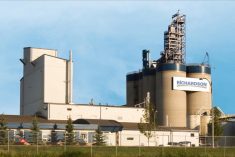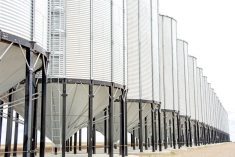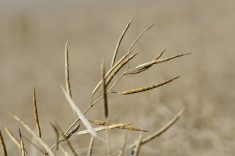CNS Canada — Canadian farmers will be seeding record acres of peas and lentils this spring, as expected, but the increases to pulse crops are coming at the expense of canola — which saw acres come in below expectations in a report out from Statistics Canada.
In its first acreage survey of the year, released Thursday, StatsCan pegged Canadian pea acres this year at 4.3 million and lentils at 5.1 million. Both would be new records and well above the area seeded last year.
However, many trade estimates had been for even larger acres of the two pulse crops, and the expanded area is not expected to weigh on prices.
Read Also

U.S. livestock: Cattle mixed on technicals, profit taking after tight supply rally
Chicago | Reuters – Chicago Mercantile Exchange cattle futures ended mixed on Wednesday as tight supplies and higher choice beef…
“Gross return per acre on lentils, based on current new-crop valuation, is head and shoulders above any other crop you can grow,” said analyst Mike Jubinville of ProFarmer Canada in Winnipeg, pointing to solid demand from India as a driving force in the pulses.
However, he noted, much of the increased lentil and pea acres will be going into non-traditional areas, which may hamper yields and quality.
For canola, average trade guesses heading into the report had generally called for a slight increase in area from the 20.1 million acres seeded in 2015. However, StatsCan’s numbers placed canola seeding intentions at only 19.3 million acres.
While there is still plenty of time for acreage shifts, as seeding operations are only beginning in Western Canada, the acreage number suggests the supply/demand balance is tightening for canola, said Jubinville.
All wheat acres (spring, winter and durum combined) were pegged at 23.8 million acres by StatsCan, which compares with 24.1 million the previous year. Of that total, durum was estimated at 6.1 million acres, which would be up from 5.8 million in 2015.
Neil Townsend of G3 Canada in Winnipeg said the durum number was above expectations, but is explained in part by dry field conditions in prime durum-growing regions of southern Saskatchewan, as durum is the best risk-aversion option in that situation.
The larger durum acres, if realized, may cause durum premiums relative to hard red spring wheat to continue to erode, Jubinville said.
StatsCan pegged barley acres were pegged at 6.8 million, which would be up from 6.5 million last year. Townsend said most of the increase was linked to growing interest on the malt side. Feed grains in general were showing some weakness, he added.
— Phil Franz-Warkentin writes for Commodity News Service Canada, a Winnipeg company specializing in grain and commodity market reporting. Follow CNS Canada at @CNSCanada on Twitter.
Table: A recap of Statistics Canada’s report on intended acres for the period ended March 31, 2016. Pre-report expectations are provided for comparison purposes. Figures are in million acres.
| Pre-report | StatsCan, | StatsCan, | |
| estimates | March 2016 | 2015-16 | |
| Canola | 19.700 – 21.300 | 19.345 | 20.095 |
| All wheat * | 21.500 – 24.200 | 23.846 | 24.111 |
| Durum | 5.400 – 6.000 | 6.120 | 5.820 |
| Barley | 6.200 – 7.000 | 6.777 | 6.527 |
| Flaxseed | 1.500 – 1.800 | 1.115 | 1.640 |
| Oats | 2.800 – 3.200 | 2.972 | 3.337 |
| Peas | 4.000 – 5.000 | 4.280 | 3.680 |
| Lentils | 4.400 – 5.500 | 5.140 | 3.950 |
* – “All wheat” includes spring wheat and durum wheat, plus winter wheat remaining after winterkill
















